As a homeowner, you may wonder when to bleed your baseboard heater. Luckily, we have done the legwork for you, and here is what we have found out.
Baseboard heaters need to be bled at the beginning of the heating season. Bleeding is required when air is trapped due to blockage in the pipe. This makes the unit lose its ability to distribute hot water via the circulation system and fails to generate heat for your home.
Bleeding a baseboard heater is an easy-to-do task that should be done periodically. Keep reading to get detailed information on when to bleed your baseboard heater.
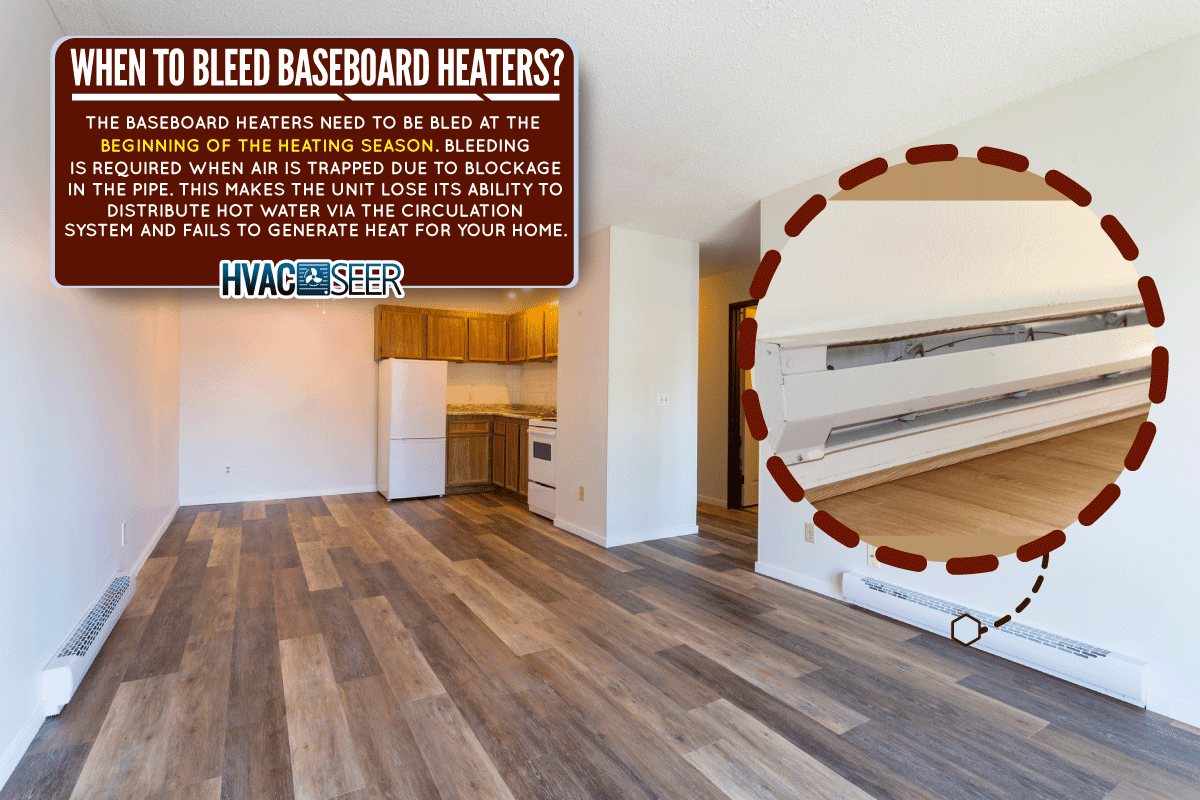
When To Bleed Baseboard Heaters?
Baseboard heaters help to warm up the rooms in your home. But when the radiator suddenly stops working, this can cause blockages. That is why Baseboard heaters should be bled when air is stuck in the pipe.
Bleeding baseboard heaters is a task that should be done periodically, preferably during the heating season. Otherwise, air will be trapped in the radiator that feeds the water heater in your home. Bleeding means that air will be purged out of the system, allowing water to flow through it.
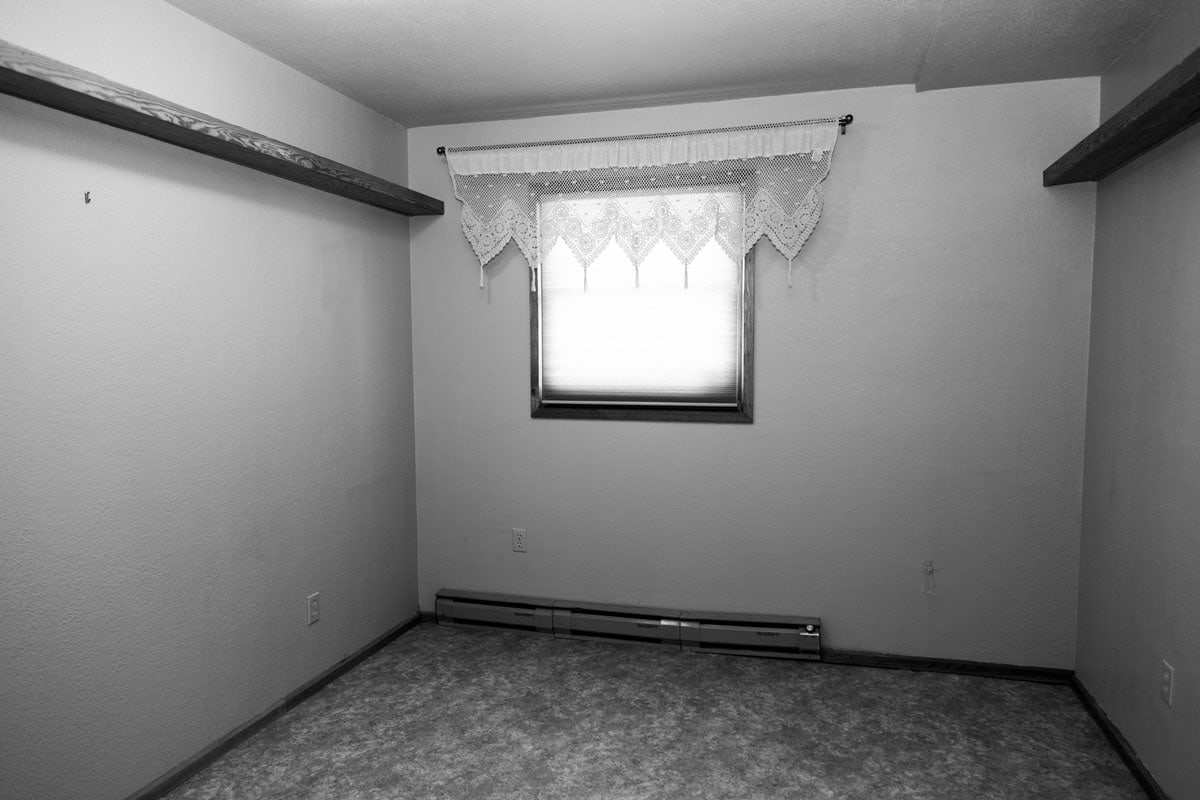
It is easy to identify where the air is trapped if you follow the loud noise coming from the system's pipe anytime water passes through it. This can make a baseboard heater inefficient, and if this problem is not fixed, it can worsen.
Getting the air out of your baseboard heating system is not hard and should not need professional help. It is a task that you can do by yourself, although you can still hire expert service.
Click here to see this baseboard heater on Amazon
How Long Do You Bleed Baseboard Heaters?
A baseboard heating system provides another means to purge air out of the heater by using air vents and ductwork to make a room warm and nice. This heating system has pipes and fins that warm up as hot water or electricity heats them. The air in the area is also warm when the heater is warm.
Typically, these heating systems take 20 - 30 seconds to bleed. But this time can increase due to the radiator size and the amount of air needed to be bled. When there is air trapped in your radiator, it makes your baseboard heater work much harder than it should.
As you can see, bleeding a heating system does not take time. All you need to do is set the radiator to the highest heat and ensure water is circulating.
How Do You Bleed Baseboard Heater?
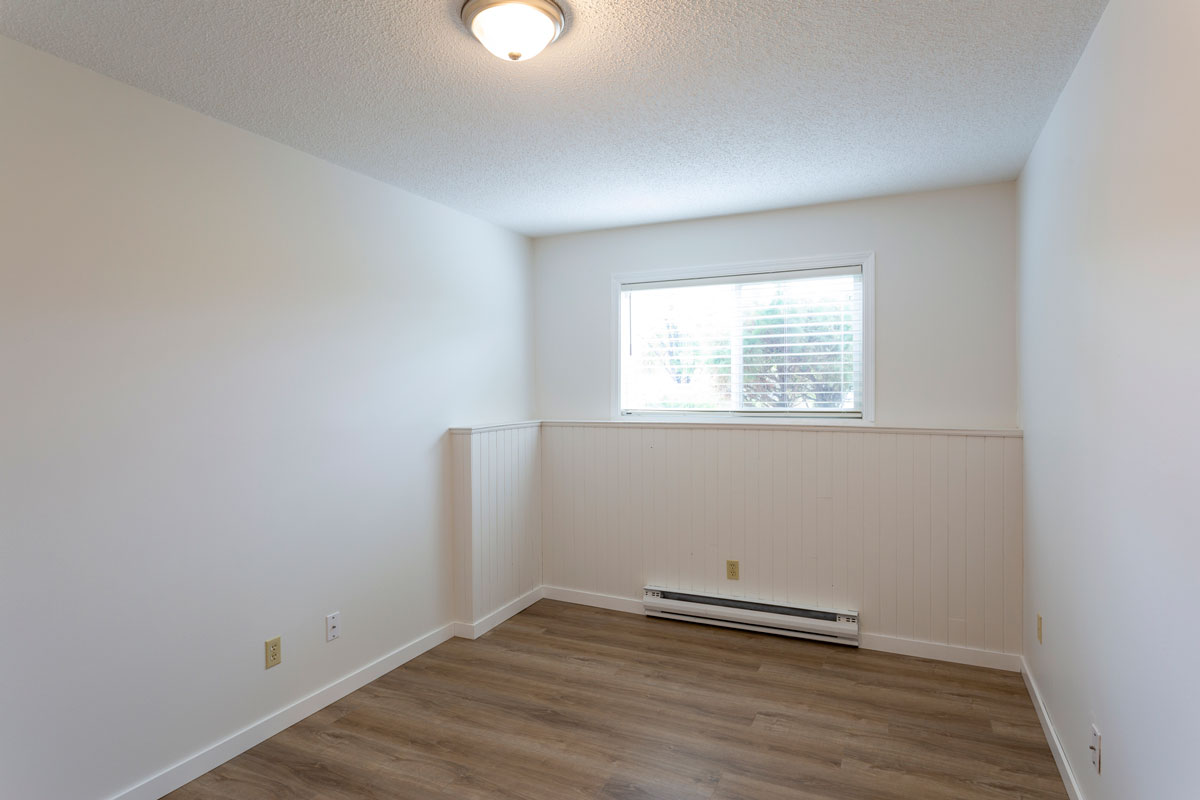
Bleeding your radiator means you want to get the air out of the baseboard heater and allow water to pass through it. Electric baseboard heaters are one of the most widely used heating systems since they are efficient and easy to maintain. Bleeding your system does not also require a professional plumber; it is a simple task that you can do it yourself by following the steps below:
Turn On The Heat
Turn on the heat to 75 degrees and leave it for at least one hour. This will allow the water to go around the system completely. You can carry out this task early in the fall so you can open your window to get rid of built-up heat in the house.
Turn Off The Heat
Turn off the heat and proceed to the utility closet or basement and look for the main tank of the system. Do this and let gravity do its job, which is to bleed the air out of the baseboard heater when the water is going back into the main tank. When you check the tank base, you will see a bleed valve that appears like a usual hose connection.
Prepare Your Working Area
Get a bucket and place it under the valve to catch any water. Most of the trapped air will be in the lower pipe as they are forced by sinking water, but still expect moisture to drip out of the valve.
Open The Valve
Open the valve by turning it to the left. Be careful as the air and water from the valve will be hot. You can wrap your hand with a rag for safety reasons. When the air starts moving out, leave the valve open and wait till all air is out of the radiator. You will notice this when the water starts flowing out in a steady stream.
Clean Up Any Spill
Use a wrench to close the valve and clean up any water that spills out.
How Much Does It Cost To Bleed A Heater?
Bleeding a heating system is a task that needs to be done for general maintenance. You should bleed your system depending on the performance of the radiator.
The costs of bleeding a heater will depend on the number of radiators. If you want to bleed 5-10 radiators which would take 1-2 hours, the cost ranges from $90 - $120. But if the number of radiators is between 10-15, which would take at least 2 - 3 hours, the labor cost will be around $120 - $200. You can get a plumber to do it, or better still, do it yourself but ensure you pay attention to the already listed steps.
Is It Safe To Leave Baseboard Heaters On All The Time?
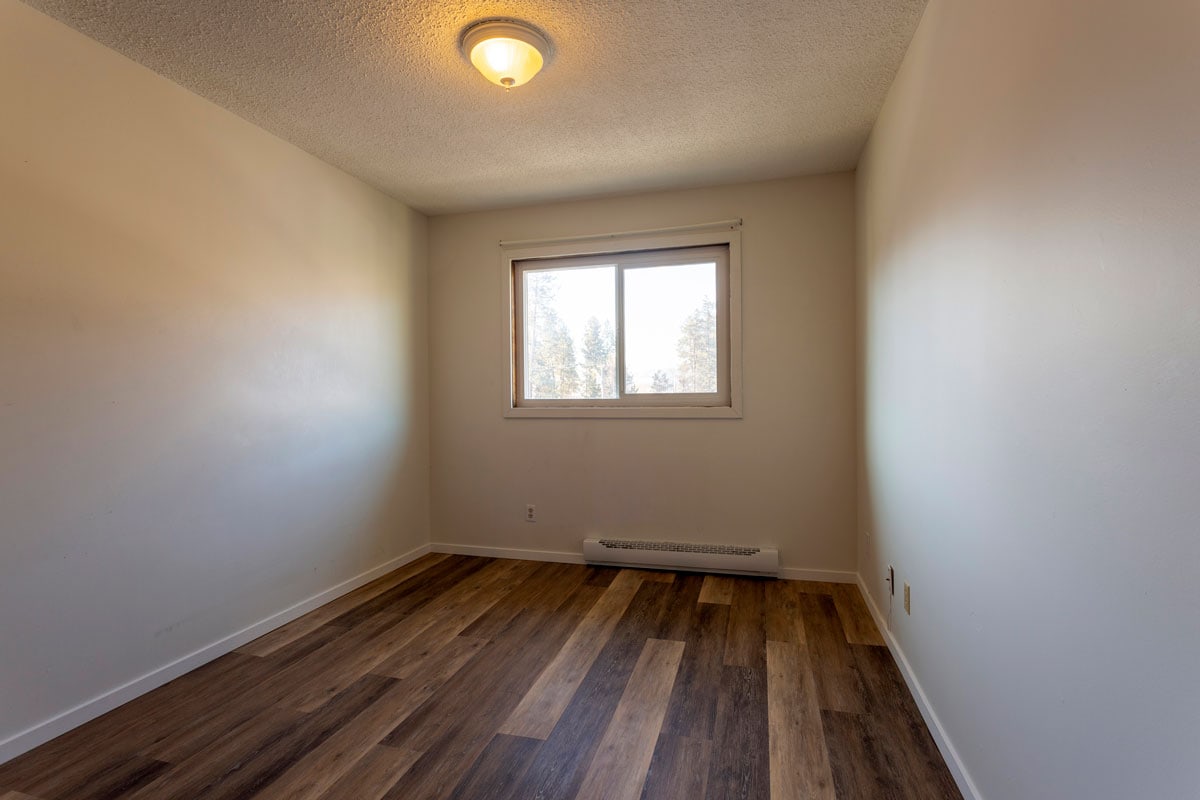
Yes, you can leave it on all the time. This also depends on the type of baseboard heater you are using. The risk is low if you are using a hot water baseboard heater.
This means you can leave it on and put your mind at rest. But if you use an electric baseboard heater, there is a high risk of fire if flammable material like cotton is around.
Avoid placing the baseboard heater near couches, furniture, and curtains. However, you can make use of a thermostat. A thermostat can be used to ensure temperature balance in the baseboard heater. All you have to do is set the temperature you need and maintain the heat for the rest of the day.
In the process of doing this task, make sure you don't restrict the airflow with flammable materials in order not to cause more heat that would lead to a high fire risk. Most importantly, keep children away from the heat of the system.
What Temperature Should Baseboard Heater Be Set At?
You can set it at 68 degrees when you are at home and set it at 60 degrees when you are not around or sleeping. Also, set your thermostat to the right temperature but not higher. Turning it higher will only consume more electricity. The right temperature will suffice and will heat your room eventually.
You should install a smart thermostat. This will help you monitor and control the temperature of your house easily from anywhere you are through a computer, smartphone, or tablet.
Do Baseboard Heaters Need To Be Cleaned?
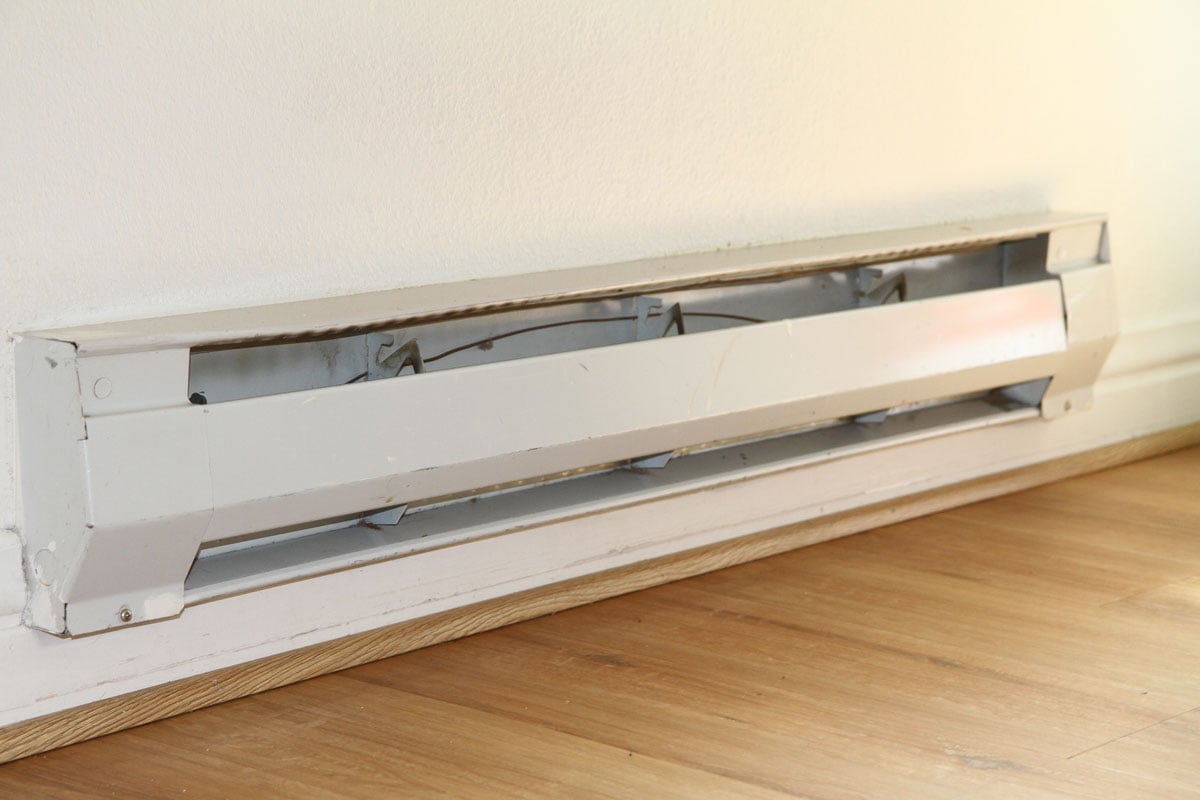
Yes, and this is because accumulated dust can affect the efficiency of the heater, and it can be a safety issue. To keep it away from any damage, ensure you get it cleaned often.
To clean your baseboard heaters, follow these steps below:
Take out the heater cover
Before this make sure to disconnect power from the unit. To remove the cover, all you have to do is change the thermostat to a low setting. Then take out the faceplate. When doing this, make sure to pull upward and lift it off the groove it is fixed in.
Wipe the fins
Get a crevice tool or dusting brush attachment from your vacuum and clean the system's interior. Be careful, so you don't bend the fins.
Fill large gaps
Some gaps near the hot water/steam pipe can let dirt enter the heater. So it would help if you filled them up. You can use spray foam insulation for this. As an extra precaution, you can seal the gaps close to the baseboard molding underneath all heaters using foil tape.
To Wrap Up
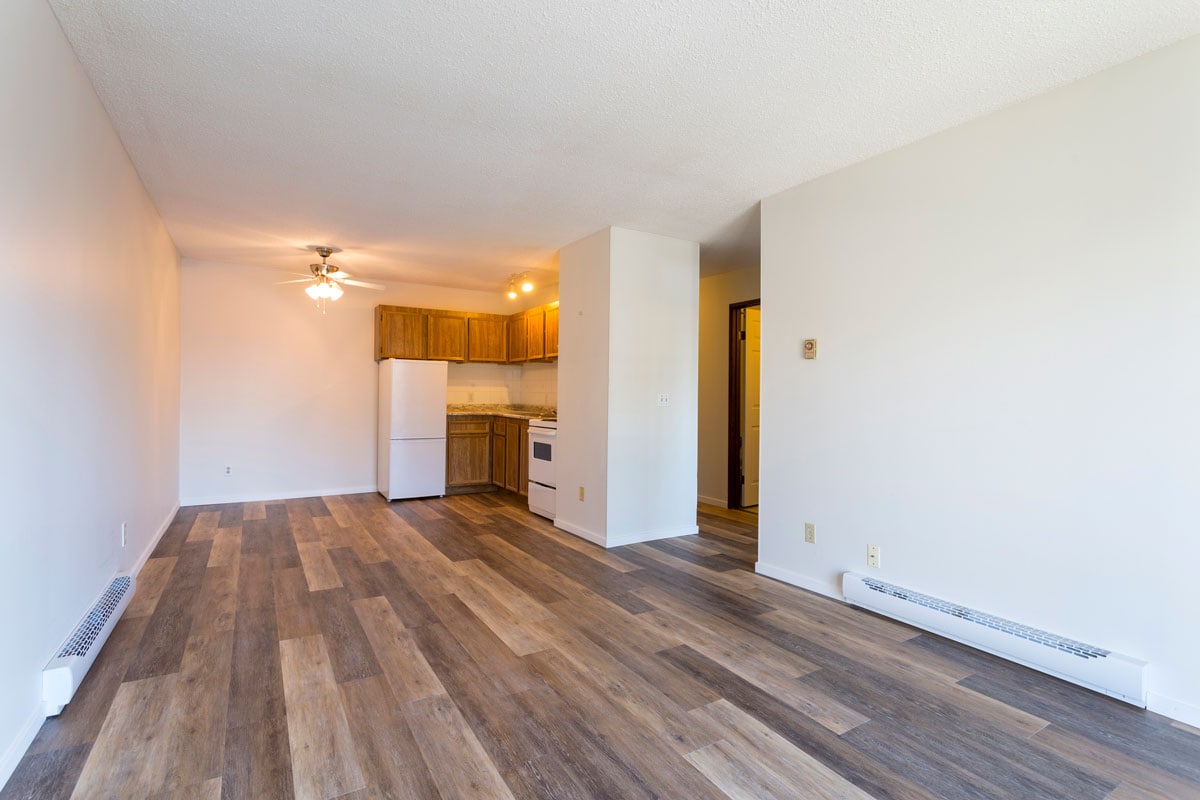
A baseboard heater helps to keep your home warm, so make sure to bleed them often. It would be best if you did this to avoid your radiator's blockages and keep your system in working order.
If you enjoyed reading this post, here are similar articles you may like:
Can You Leave Baseboard Heaters On When Not Home?

